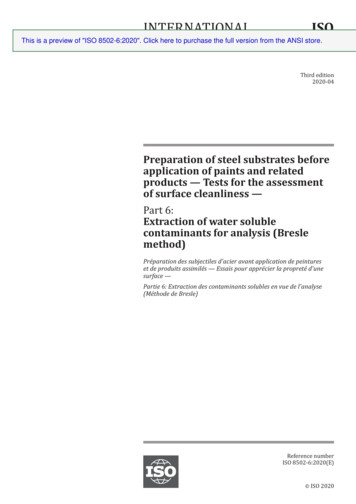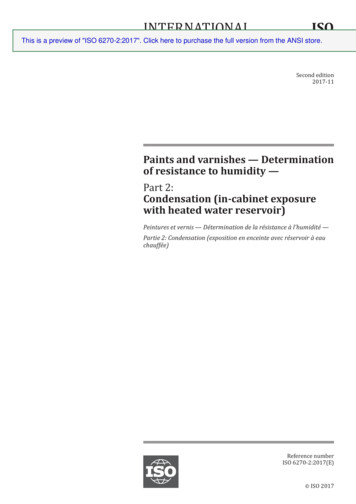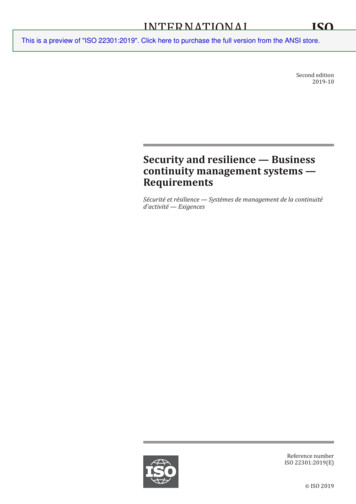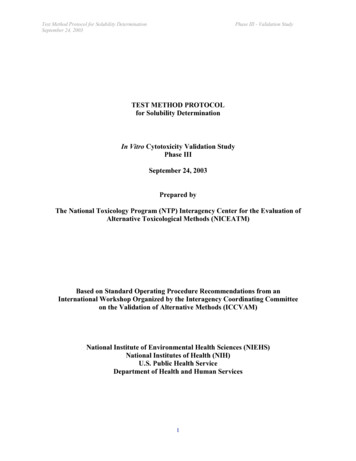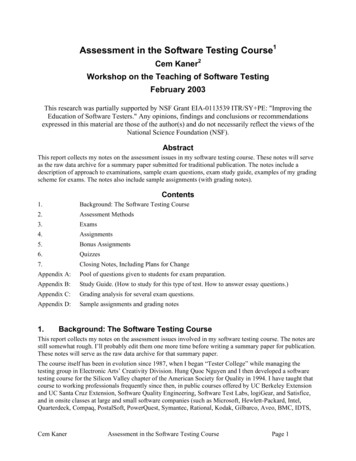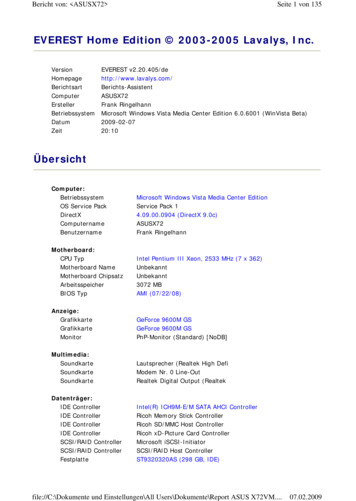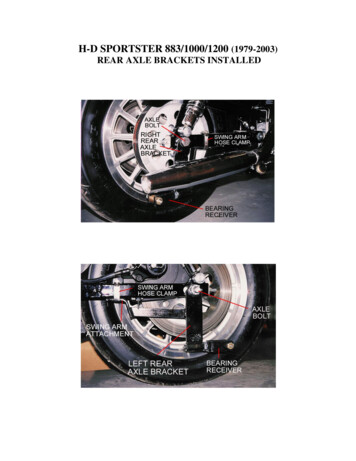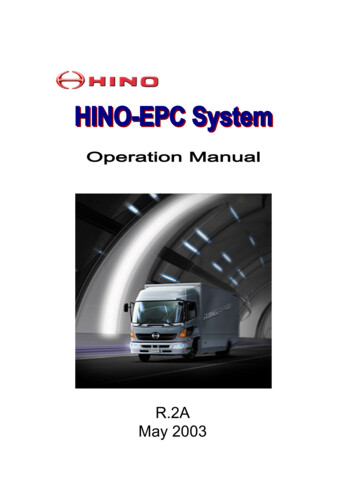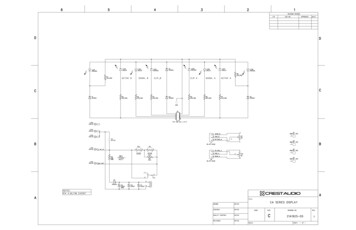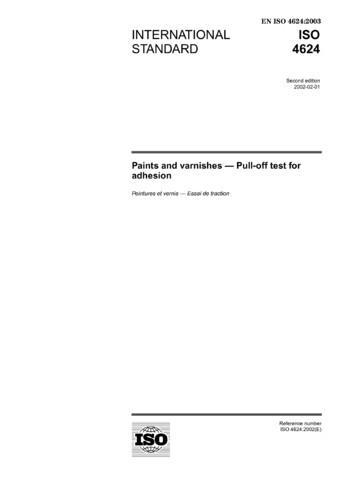
Transcription
EN ISO 4624:2003INTERNATIONALSTANDARDISO4624Second edition2002-02-01Paints and varnishes- Pull-off test foradhesionPeintures et vernis ---- -- ISOJ Essai de tractionReference numberISO 4624:2002(E)
EN ISO 4624:2003ii
EN ISO 4624:20031Scope .12Normative references . . . . . . . . . . . . . . . . . . . . . . . . . . . . .13Principle . . . . . . . . . . . . . . . . . . . . . . . . . . . . . . .14Required supplementary information . .25 Apparatus . . . . . . . . . . . . . . . . . . . . . . . . . . . . . . .26Adhesives .47Sampling . . . . . . . . . . . . . . . . . . . . . . . . . . . . . . . . . . . . . . . . . . . . .48Test panels . . . . . . . . . . . . . . . . . . . . . . . . . . . . . . . . .59 Procedure . . . . . . . . . . . . . . . . . . . . . . . . . . . . . . . . . . . . . . . . . . .10 Calculation and expression of results .5811Precision . . . . . . . . . . . . . . . . . . . . . . . . . . . . . . . .812Test report9AnnexARequired supplementary information.10Bibliography.11iii
EN ISO 4624:2003ForewordISO (the International Organization for Standardization) is a worldwide federation of national standards bodies (ISOmember bodies). The work of preparing International Standards is normally carried out through ISO technicalcommittees. Each member body interested in a subject for which a technical committee has been established hasthe right to be represented on that committee. International organizations, governmental and non-governmental, inliaison with ISO, also take part in the work. ISO collaborates closely with the International ElectrotechnicalCommission (IEC) on all matters of electrotechnical standardization.International Standards are drafted in accordance with the rules given in the ISO/IEC Directives, Part 3.Draft International Standards adopted by the technical committees are circulated to the member bodies for voting.Publication as an International Standard requires approval by at least 75 %of the member bodies casting a vote.Attention is drawn to the possibility that some of the elements of this International Standard may be the subject ofpatent rights. ISO shall not be held responsible for identifying any or all such patent rights.International Standard ISO 4624 was prepared by Technical Committee ISO/TC 35, Paints and varnishes,Subcommittee SC 9, General test methods for paints and varnishes.This second edition cancels and replaces the first edition (ISO 4624:1978), clause 6 and subclauses 5.1, 5.2, 5.4and 8.2 of which have been technically revised.Annex A forms a normative part of this International Standard.iv
EN ISO 4624:2003IntroductionThis International Standard is one of two standards which describe methods for assessing the adhesion of a singlecoating or a multi-coat system of paint, varnish or related product by measuring the minimum tensile stressnecessary to detach or to rupture the coating in a direction perpendicular to the substrate.The test result is influenced not only by the mechanical properties of the system under test, but also by the natureand preparation of the substrate, the method of paint application, the drying conditions of the coating, thetemperature, the humidity and other factors like the type of test instrument which has been used.The other International Standard is ISO 2409:1992, Paints and varnishes -Cross-cut test.v
EN ISO 4624:2003blank
EN ISO 4624:2003Paints and varnishes- Pull-off test for adhesion1 ScopeThis International Standard describes methods for determining the adhesion by carrying out a pull-off test on a singlecoating or a multi-coat system of paint, varnish or related product.These test methods have been found useful in comparing the adhesion behaviour of different coatings. It is mostuseful in providing relative ratings for a series of coated panels exhibiting significant differences in adhesion.The test may be applied using a wide range of substrates. Different procedures are given according to whether thesubstrate is deformable, for example thin metal, plastics and wood, or rigid, for example thick concrete and metalplates. For special purposes, the coating may be applied directly to the face of a test dolly.2 Normative referencesThe following normative documents contain provisions which, through reference in this text, constitute provisions ofthis International Standard. For dated references, subsequent amendments to, or revisions of, any of thesepublications do not apply. However, parties to agreements based on this International Standard are encouraged toinvestigate the possibility of applying the most recent editions of the normative documents indicated below. Forundated references, the latest edition of the normative document referred to applies. Members of ISO and IECmaintain registers of currently valid International Standards.ISO 1513:1992, Paints and varnishes- Examination and preparation of samples for testingISO 1514:-1l, Paints and varnishes- Standard panels for testingISO 2808:1997, Paints and varnishes- Determination of film thicknessISO 3270:1984, Paints and varnishes and their raw materials- Temperatures and humidities for conditioning andtestingISO 15528:2000, Paints, varnishes and raw materials for paints and varnishes- Sampling3 PrincipleThe product or system under test is applied at uniform thickness to flat panels of uniform surface texture.After drying/curing the coating system, dollies are bonded directly to the surface of the coated, cured panel using anadhesive.After curing of the adhesive, the bonded dolly assemblies are placed in a suitable tensile tester. The bondedassemblies are subjected to a controlled tensile test (pull-off test), and the force required to break thecoating/substrate bond is measured.The test result is the tensile stress necessary to break the weakest interface (adhesive failure) or the weakestcomponent (cohesive failure) of the test assembly. Mixed adhesive/cohesive failures may also occur.1) To be published. (Revision of ISO 1514:1993)1
EN ISO 4624:20034 Required supplementary informationFor any particular application, the test methods specified in this International Standard need to be completed bysupplementary information.The items of supplementary information are given in annex A.5 Apparatus5.1 Tensile tester, suitable for carrying out the chosen procedure specified in clause 9. The tensile stress shall beapplied in a direction perpendicular to the plane of the coated substrate and shall be increased at a substantiallyuniform rate, not greater than 1 MPa/s2l, such that failure of the test assembly occurs within 90s. Suitable designs forapplying the tensile stress are shown in Figures 1 and 2.NOTE 1 Instead of a tensile tester, other types of pull-off adhesion testers (mechanically, pneumatically, hydraulically or handdriven) may be used provided that they give similar results. The type of instrument shall be reported in the test report, becausehand-driven/mechanical/hydraulic instruments are reported to produce widely different results.NOTE 2 The results can be influenced by the test assembly used. Furthermore, the results are not reproducible unless coaxialalignment of the tensile forces is ensured.12345Key12345SupportBall jointDolliesCoatingSubstrateFigure 1 -2) 1 MPa/s2Example of a suitable test apparatus for the methods described in 9.4.1 and 9.4.31 MN/m2 s
EN ISO 4624:2003Ii-4I123456Key1Coating2Test piece345Dolly6Ball-and-socket sliding jointSupport (suitably designed to allow forjoint assembly)i- -Ball-and-socket sliding jointFigure 2 - Example of a suitable test apparatus for the method described in 9.4.25.2 Test dollies, each consisting of a steel- or aluminium-faced cylinder, specifically designed to be used with thetensile tester. Each dolly has a rigid, flat face for bonding the adhesive/coating at one end and a facility for connectingthe pull-off tester at the other. Each dolly has a nominal diameter of 20 mm (see however following paragraph) andsufficient thickness to ensure freedom from distortion during the test. It is recommended that the length of each dollyis not less than half its diameter. The faces of each dolly shall be machined perpendicular to its axis before use.Dollies with a diameter of 7 mm may be used when the method for testing adhesion from one side only is used (see9.4.2). If dollies of 7 mm in diameter are used, 10 measurements shall be made to improve the precision. Thediameter of the dollies shall be reported in the test report.5.3 Centering device, for ensuring proper coaxial alignment of the test assembly during the adhesion processdescribed in 9.4.1 and 9.4.3. A suitable design is shown in Figure 3.5.4 Cutting device, such as a sharp knife, for cutting through cured adhesive and the paint coating to thesubstrate, round the circumference of the dolly.Depending on the mechanical properties of the paint system (e.g. brittleness), cutting through the cured adhesiveand the paint film to the substrate can have a big influence on the adhesion of the paint system. It is permitted, ifspecified or agreed between the interested parties, not to cut when the paint systems are less than 150 [Lm in layerthickness. If cuts around the dolly have been made, this shall be mentioned in the test report and the type of cuttingtool also mentioned.3
EN ISO 4624:2003Dimensions in millimetres2Key1Test assembly aligned for adhesion process (see 5.3)2Centering pinFigure 3 - Example of a suitable centering device for 20-mm-diameter dollies6 AdhesivesSpecial attention is required in selecting suitable adhesives to be used in the test. To produce failure of the coating,it is essential that the cohesive and bonding properties of the adhesive are greater than those of the coating undertest.Preliminary screening of adhesives shall be carried out in order to determine their suitability for use. Suitableadhesives and, if applicable, their unmixed components shall cause little or no visible change in the coating undertest when left in contact with the coating for a period equivalent to the curing time of the adhesive.Adhesives which give the highest results, which means the most coating-substrate adhesive failure, are preferred.In most cases, cyanoacrylate, two-component solventless epoxide and peroxide-catalysed polyester adhesives havebeen found suitable. In special tests under highly humid conditions, the curing time of the adhesive shall be as shortas possible. The use of two-pack quick-drying epoxy adhesive is preferable in these situations.NOTE Where failure is mainly associated with the adhesive, the use of another type of adhesive may enable more useful resultsto be obtained.7 SamplingTake a representative sample of the product to be tested (or of each product in case of a multi-coat system), asdescribed in ISO 15528.Examine and prepare the sample for testing, as described in ISO 1513.4
EN ISO 4624:20038 Test panels8.1 SubstrateUnless otherwise agreed, select the substrate from one of those described in ISO 1514, using where possible thesame type of material as will be used in practice. The substrate panels shall be plane and free from distortion.8.2 Preparation and coatingUnless otherwise agreed, prepare each test panel in accordance with that pretreatment method which is intended tobe carried out on the original surface. The chosen pretreatment shall be reported in the test report.8.3 Drying and conditioningDry (or stove) and age, if applicable, each coated test panel for the specified time and under the specified conditions.Before testing, condition the coated panels at (23 2) C and a relative humidity of (50 5) % (see ISO 3270),unless otherwise agreed, for a minimum period of 16 hours.8.4 Thickness of coatingThe thickness of the coating shall be specified and agreed between the interested parties. Determine the thickness,in micrometres, of the dried coating by one of the procedures specified in ISO 2808.NOTE See also clause 1.9 Procedure9.1Number of determinationsCarry out at least six determinations, i.e. using at least six test assemblies (see 9.4).9.2 Ambient conditionsCarry out the test at (23 2) C and a relative humidity of (50 5) %, unless otherwise agreed (see ISO 3270).9.3 AdhesivePrepare and apply the adhesive (see clause 6) in accordance with the manufacturer's instructions. Use the minimumquantity of adhesive required to produce a firm, continuous and even bond be
International Standard ISO 4624 was prepared by Technical Committee ISO/TC 35, Paints and varnishes, Subcommittee SC 9, General test methods for paints and varnishes. This second edition cancels and replaces the first edition (ISO 4624:1978), clause 6 and subclauses 5.1, 5.2, 5.4 and 8.2 of which have been technically revised.File Size: 313KBPage Count: 18


